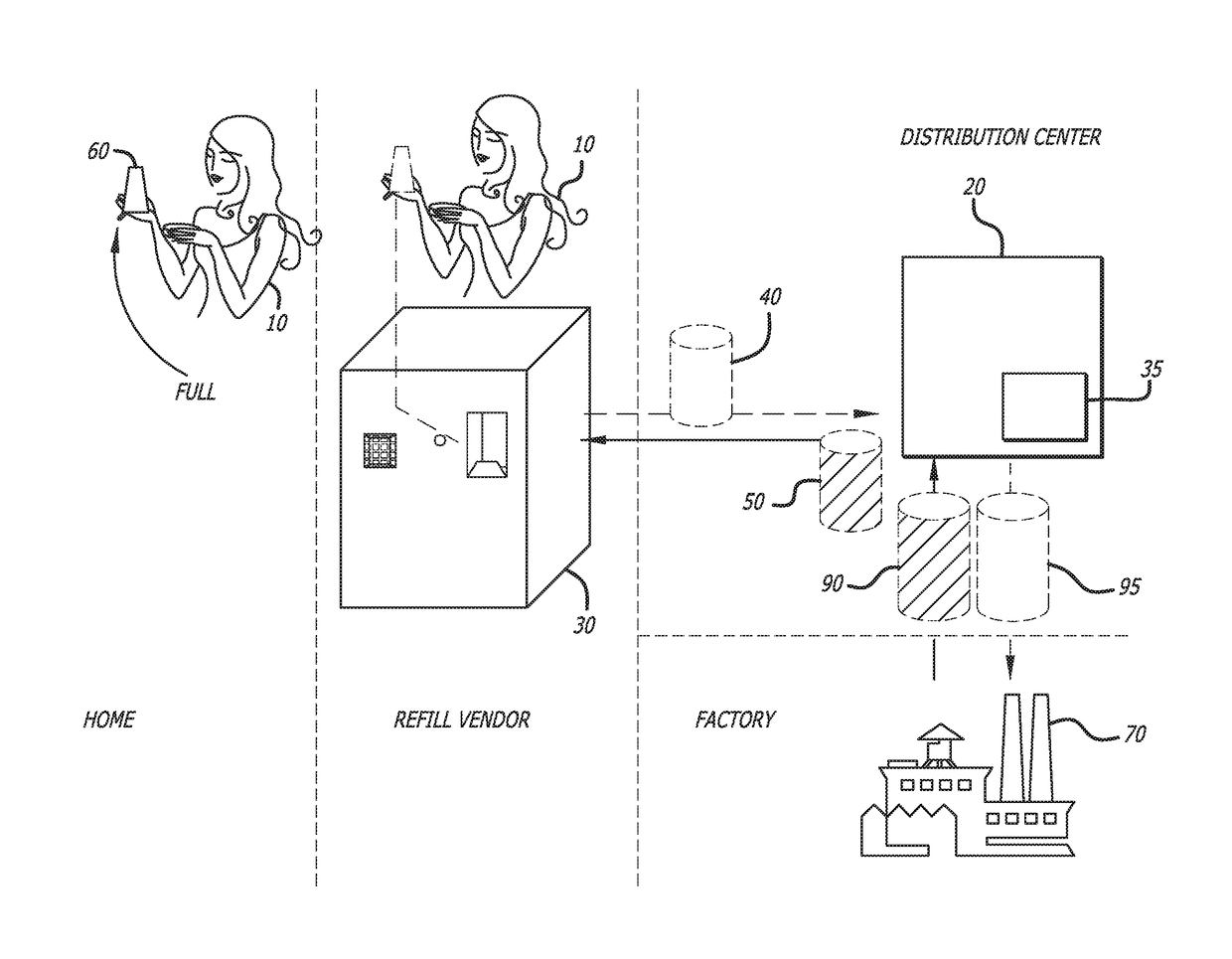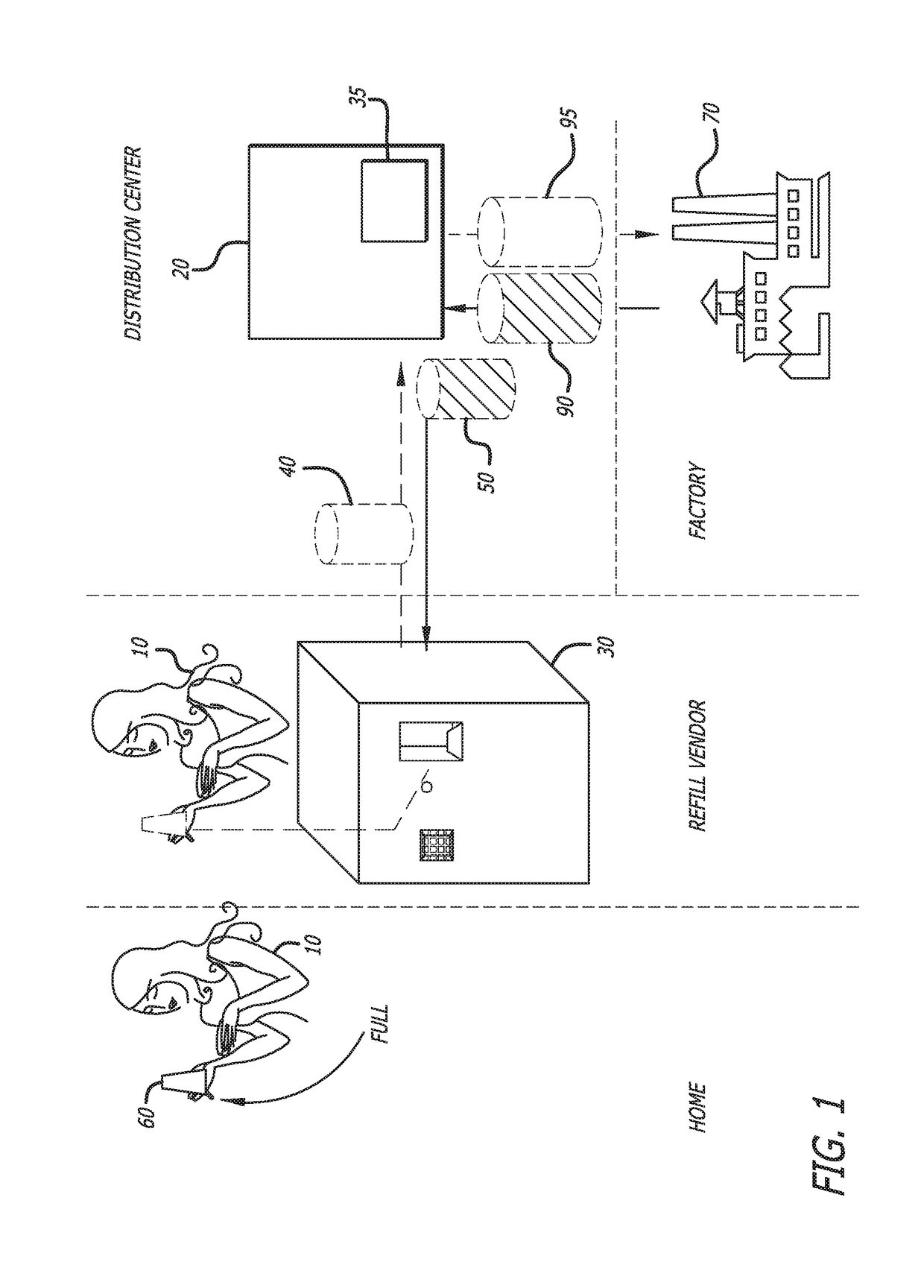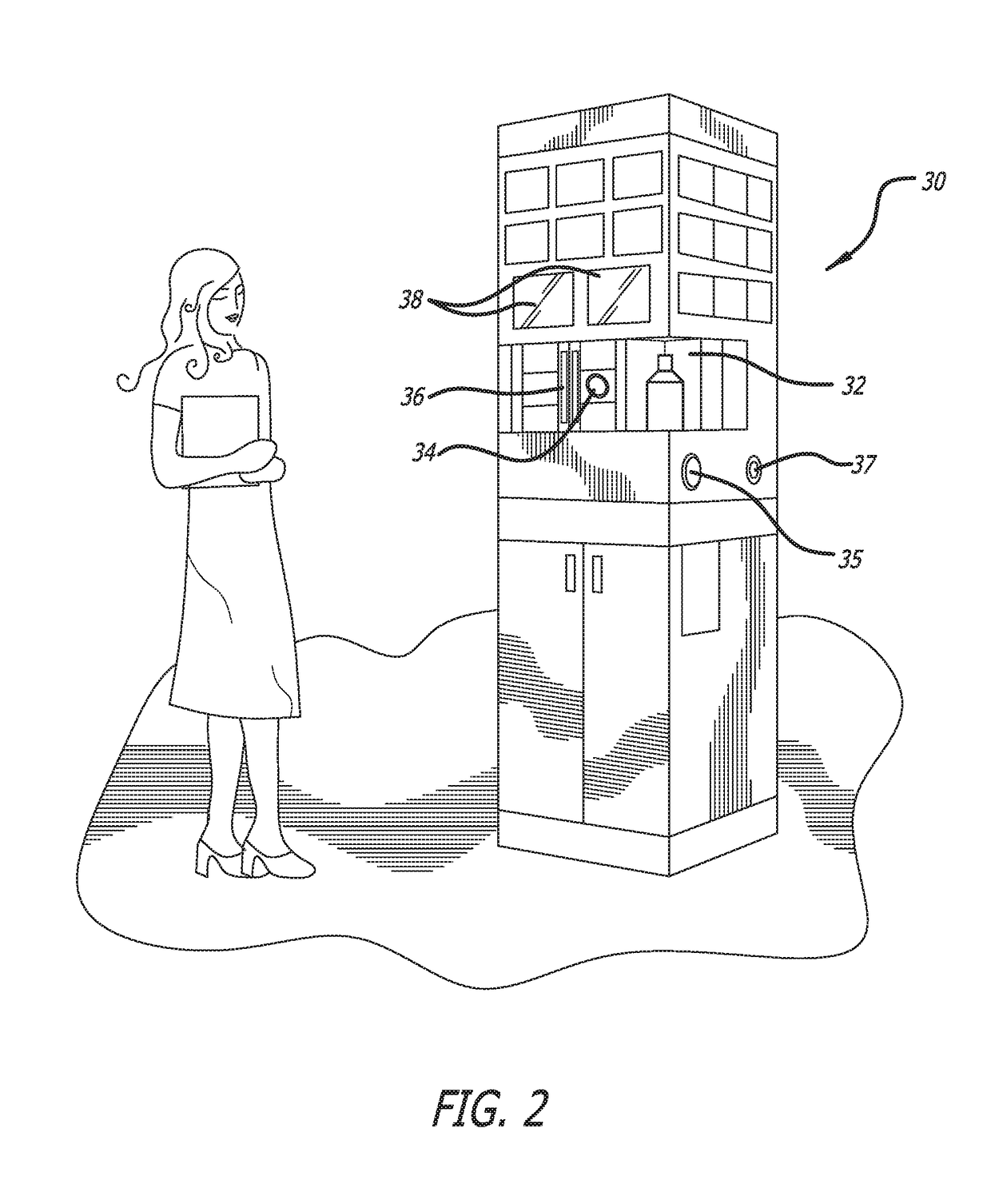Method for distributing product using a consumer refillable packaging in a retail environment
a technology of consumer refillable packaging and retail environment, which is applied in the field of material management, can solve the problems of slow movement toward environmentally friendly packaging, significant waste, and increased cost to both the manufacturer and the customer for repeated purchasing of the same packaging, and achieves the effects of convenient refilling of larger consumer containers, less exchanging, and convenient expansion
- Summary
- Abstract
- Description
- Claims
- Application Information
AI Technical Summary
Benefits of technology
Problems solved by technology
Method used
Image
Examples
Embodiment Construction
[0025]Refill marketing can change the way that cosmetics and personal care products are marketed because it is simple, it lowers the price for consumers, it increases profits of the companies who implement it, and can provide a competitive advantage over competitors in the marketplace. The costs to implement a refill program are few, such as the cost of the refill package, depreciation costs spread over refills of refill stations and cartridges used to actuate the refill packaging, and incremental return shipping costs per refill. Compared to traditional packaging, the tables below shows that savings are easily realized.
[0026]
PACKAGING, SHIPPING, HANDLING AND INVENTORY COST REDUCTION50-ml Refill Container (2-year Retention Life)Traditional Refill MarketingPackage 75%10%Inventory 0% 0%Royalty 6%LogisticsSupport 5%ShippingPackage 25% 2%Refill Cartridges13%DepreciationRefill Cartridges 0%Refill Station 4%Warehouse Refill Station 0%Intermediate Bulk Containers 0%Total100%40%Net Savings ...
PUM
 Login to View More
Login to View More Abstract
Description
Claims
Application Information
 Login to View More
Login to View More - R&D
- Intellectual Property
- Life Sciences
- Materials
- Tech Scout
- Unparalleled Data Quality
- Higher Quality Content
- 60% Fewer Hallucinations
Browse by: Latest US Patents, China's latest patents, Technical Efficacy Thesaurus, Application Domain, Technology Topic, Popular Technical Reports.
© 2025 PatSnap. All rights reserved.Legal|Privacy policy|Modern Slavery Act Transparency Statement|Sitemap|About US| Contact US: help@patsnap.com



